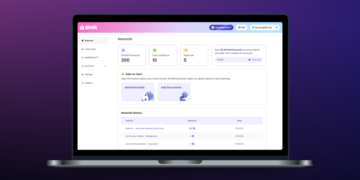
To drive growth and profitability, writes Eric Bramlett, it’s important to keep your eye on the bottom line, and these numbers will help you do just that.
Tracking performance metrics is one of the most important things a business owner can do to gain valuable insights into their brokerage or team’s performance, identify areas for improvement and make informed decisions that drive growth. Unfortunately, many team leaders and brokers don’t track effectively or focus on suboptimal metrics, which can lull them into a false sense of success and lead them in the wrong direction.
While metrics like topline sales or agent count can be important, they don’t provide a clear picture of your business’s revenue or profitability. For example, a brokerage may have a large number of agents, but if they’re not making sales, the agents don’t generate topline revenue. A brokerage may have high topline sales, but if they offer splits that are too generous, those sales don’t generate revenue for the business.
On the other hand, tracking the right metrics, such as agent conversion rate, lead conversion rate, revenue on ad spend, revenue per agent and income per agent, can provide unparalleled clarity into your brokerage or team’s performance. These enable the ability to identify your top performers, evaluate the value of different lead sources, optimize your advertising budget, reward high-performing agents, and ensure that agents are paid fairly and competitively.
Here are the 5 marketing metrics that brokers and team leaders should focus on:
Agent conversion rate: This metric tells you how effective each agent is at closing the leads given to them. Comparing each agent’s conversion rate to other agents on the team can help identify top performers, and provide opportunities for coaching and training for those who need improvement.
Conversion rate (by marketing source): Knowing the percentage of closings to the number of leads received from a marketing source can help you evaluate the value of each lead source. You can use this metric to determine which lead sources are worth investing more time and money into and which are not yielding results.
Revenue on ad spend (ROAS): Measuring your return on investment for your advertising efforts is paramount. ROAS helps you determine the amount of revenue generated from your advertising spend. You can use this metric to optimize your advertising budget by focusing on the channels and campaigns that deliver the highest ROI.
Agent production: This metric tells you how much sales production each agent generates for your brokerage or team. Tracking this metric can help you identify your top-performing agents and reward them accordingly. Additionally, you can use this metric to set performance goals for your team and motivate them to achieve higher revenue targets.
Net operating income (NOI): This is calculated by subtracting all expenses from your topline income. After paying your agents, staff, office, and marketing expenses, how much money did your brokerage or team earn? NOI is an important metric for a real estate brokerage as it measures the profitability of the business, which is essential for the brokerage’s sustainability and growth.
Tracking these metrics is crucial to drive growth and profitability for your business and stay competitive. By measuring these key performance indicators, leaders can have valuable insights into performance and identify areas for improvement to drive their business forward.
Eric Bramlett is the owner of Bramlett Residential, a mid-sized real estate brokerage in Austin, Texas. Connect with him on Instagram and LinkedIn.
- SEO Powered Content & PR Distribution. Get Amplified Today.
- PlatoAiStream. Web3 Data Intelligence. Knowledge Amplified. Access Here.
- Minting the Future w Adryenn Ashley. Access Here.
- Buy and Sell Shares in PRE-IPO Companies with PREIPO®. Access Here.
- Source: https://www.inman.com/2023/05/18/5-marketing-metrics-brokers-and-team-leaders-should-scrutinize/
- :is
- :not
- 11
- 30
- a
- ability
- accordingly
- Achieve
- Ad
- Additionally
- Advertising
- After
- Agent
- agents
- All
- amount
- an
- and
- ARE
- areas
- AS
- At
- Aug
- austin
- auto
- BE
- BEST
- Bottom
- brokerage
- brokers
- budget
- business
- but
- by
- calculated
- Campaigns
- CAN
- channels
- clarity
- clear
- closing
- coaching
- comparing
- competitive
- Connect
- Conversion
- crucial
- decisions
- deliver
- Determine
- DID
- different
- direction
- do
- document
- Dont
- double
- down
- drive
- each
- earn
- Effective
- effectively
- efforts
- enable
- ensure
- essential
- estate
- evaluate
- example
- expenses
- eye
- fairly
- false
- Focus
- focusing
- For
- Forward
- from
- Gain
- generate
- generated
- generates
- generous
- get
- given
- Goals
- Growth
- hand
- Have
- help
- helps
- High
- high-performing
- higher
- highest
- him
- How
- HTTPS
- identify
- if
- important
- improvement
- in
- Income
- Indicators
- informed
- insights
- into
- investing
- Investopedia
- IT
- join
- Join us
- just
- Keep
- Key
- Knowing
- knowledge
- large
- LAS
- Las Vegas
- lead
- leaders
- Leads
- LEARN
- like
- Line
- make
- Making
- many
- Marketing
- May..
- measures
- measuring
- message
- metric
- Metrics
- money
- more
- most
- much
- Need
- now
- number
- numbers
- of
- offer
- Office
- on
- ONE
- operating
- opportunities
- Optimize
- or
- Other
- owner
- paid
- Paramount
- paying
- percentage
- performance
- performers
- picture
- plato
- Plato Data Intelligence
- PlatoData
- presentation
- price
- Production
- profitability
- provide
- Rate
- real
- real estate
- received
- Results
- return
- revenue
- Reward
- right
- ROI
- sales
- sense
- set
- shift
- should
- skills
- Source
- Sources
- spend
- Splits
- Staff
- stay
- success
- such
- Sustainability
- targets
- team
- tells
- texas
- that
- The
- their
- Them
- These
- they
- things
- this
- those
- ticket
- time
- times
- to
- too
- top
- track
- Tracking
- Training
- true
- unfortunately
- unparalleled
- us
- use
- Valuable
- value
- VEGAS
- Watch
- which
- WHO
- will
- with
- worth
- Wrong
- yielding
- you
- Your
- zephyrnet












